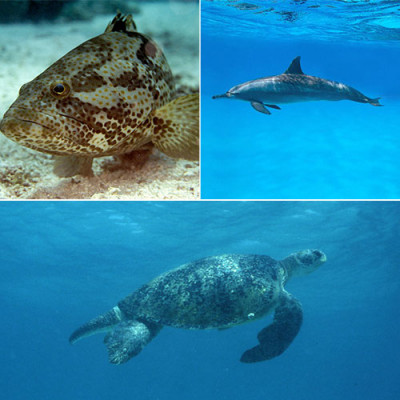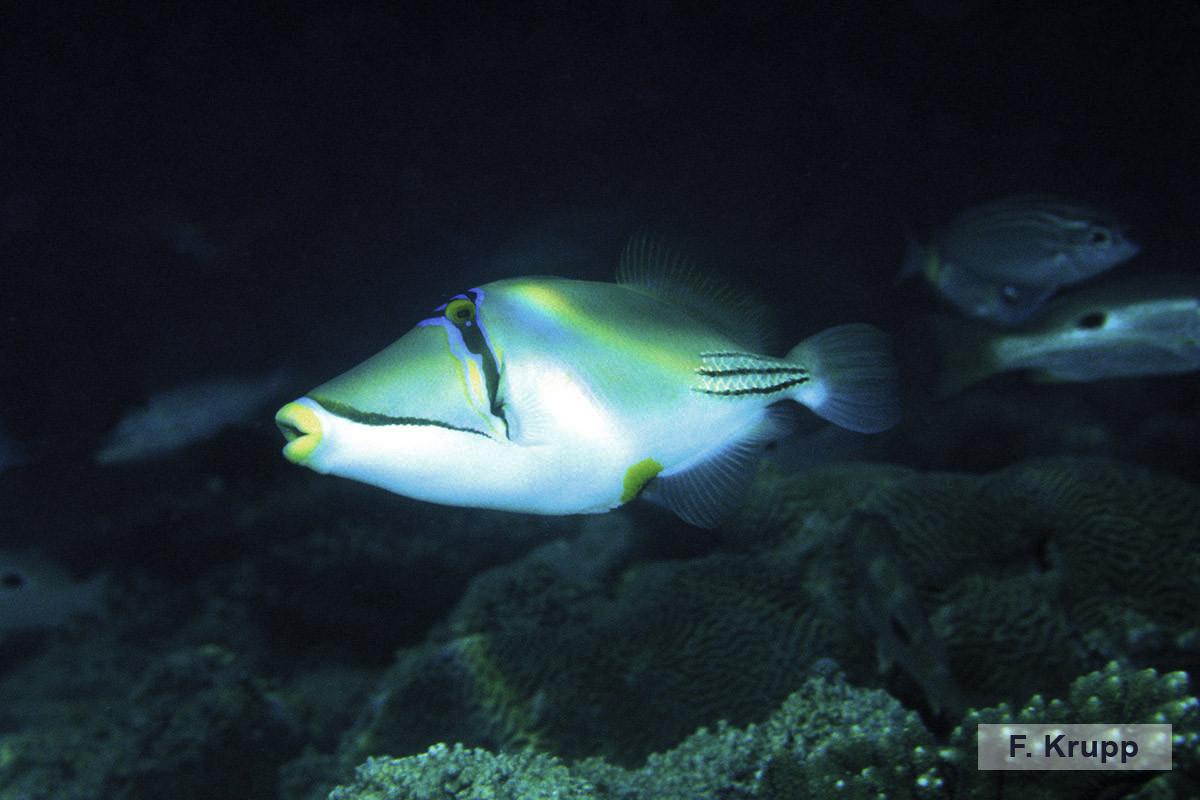Name: Picasso Triggerfish
Local name: Homara
Scientific name: Rhinecanthus assasi
Classification: Class: ray-finned fishes; Order: plectognaths; Family: triggerfishes (Balistidae)
Size: It attains a maximum total length of 30 cm.
Habitat:
This territorial species inhabits coral assemblages and nearby sandy and rubble areas, usually in less than 10 m depth, feeding on benthic invertebrates. Juveniles are commonly found on reef flats. Triggerfishes are named for a mechanism by which the stout first dorsal spine can be locked in an erect position by the small second spine; if the second spine, the trigger, is depressed, the first spine can be folded back.
Distribution:
The Picasso Triggerfish is restricted to the seas surrounding the Arabian Peninsula, from the northern Red Sea, via southern Arabia to the Arabian Gulf.
Conservation status:
It has not yet been assessed globally by the IUCN Red List of Threatened Species. In a regional assessment for the Arabian Gulf it was classified as Least Concern (LC). The Picasso Triggerfish is of no importance to fisheries, but occasionally enters the aquarium trade.
Description:
The body is moderately deep and compressed. The skin is very thick and scales are small and do not overlap. The snout is moderately long and the mouth small and non-protractile. The caudal fin is double emarginate or slightly rounded. The ground color of the body and head is yellowish grey, grading to white ventrally, with a blue-edged black bar from the eye to the gill opening, preceded by a yellow band and a light blue line. A dark brown streak extends from above the mouth to the base of the pectoral fin. Spines posteriorly on the body are in narrow black stripes.








